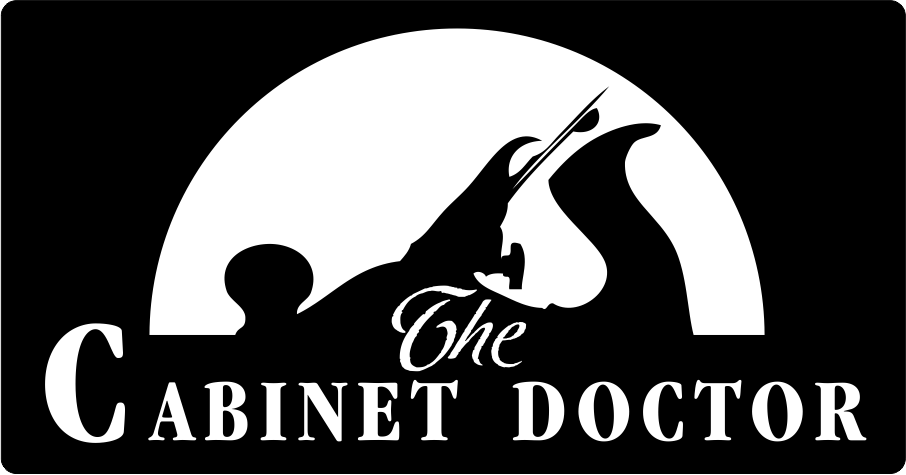Knowledge Base
Common Cabinetry Wood Types and Their Properties
Alder
- Similar grain pattern, hardness and colour to cherry without the red undertone
- Stains well
- Popular as a “rustic” look by including the large dark knots for character
Black Walnut
- Colour varies from medium brown to dark brown with purple tones
- Walnut lightens over time with exposure to light
- Slightly harder than cherry
- Most popular finish is clear lacquer to show the colour and grain of the wood
Cherry
- Has a beautiful red brown undertone
- Has an attractive grain that is not overpowering
- Has characteristic mineral pits which enhance the interest and beauty of the wood
- Stains consistently
- One of the softer hardwoods
- Colour deepens and darkens over time with exposure to light
Hickory
- The hardest domestic hardwood
- Sapwood is white to yellow, heartwood is reddish brown
- Hickory is often shown with natural blends of the brown and white wood in one piece, or in a rustic style with knots, streaks, and both colours showcased
MDF
- A blend of resins and waste wood fibres compressed into a dense sheet
- It has no grain to speak of
- Higher density MDF machines and sands well and provides a smooth surface for painting
- Stable, not prone to seasonal expansion and contraction like sawn lumber
- Swells when directly exposed to moisture, although moisture resistant types are available
Poplar
- Soft wood with large variance in colour, from white to green to gray
- Tight flat grain that paints well, leading to its common use in casing and baseboard trims
- Not recommended for staining or clear lacquer finishes
Red Oak
- The hardwood standby for cabinetry for decades because of its hardness
- Distinctive “candle flame” grain pattern
- Takes stain well although deep grain tends to pull out darker tones creating a more “striped” appearance
White Oak
- Less pink undertone than its cousin the red oak
- Harder wood than red oak and contains natural preservatives in the wood
Rift or Quartered Oak
- Special cuts from red or white oak
- Provides a unique pattern of grain
- Rift Oak – linear grain pattern without candle flames
- Quartered Oak – linear grain with “rays” or flecks across the grain pattern
- The same board can shift from rift to quartered along its length
- Lumber is sold as a rift/quartered mix and the more “pure” the grain selection is, the higher the cost of the final product
White Maple
- Very hard, light coloured hardwood
- Tight grain without a strong pattern
- Not the best for wipe staining because of inconsistent absorption
- Popular for painting because of its flat grain texture
White Pine
- A softwood with an almost white colour that ambers over time
- Popular with included knots for a country or cottage feel
- Wood is soft; dents and marks easily
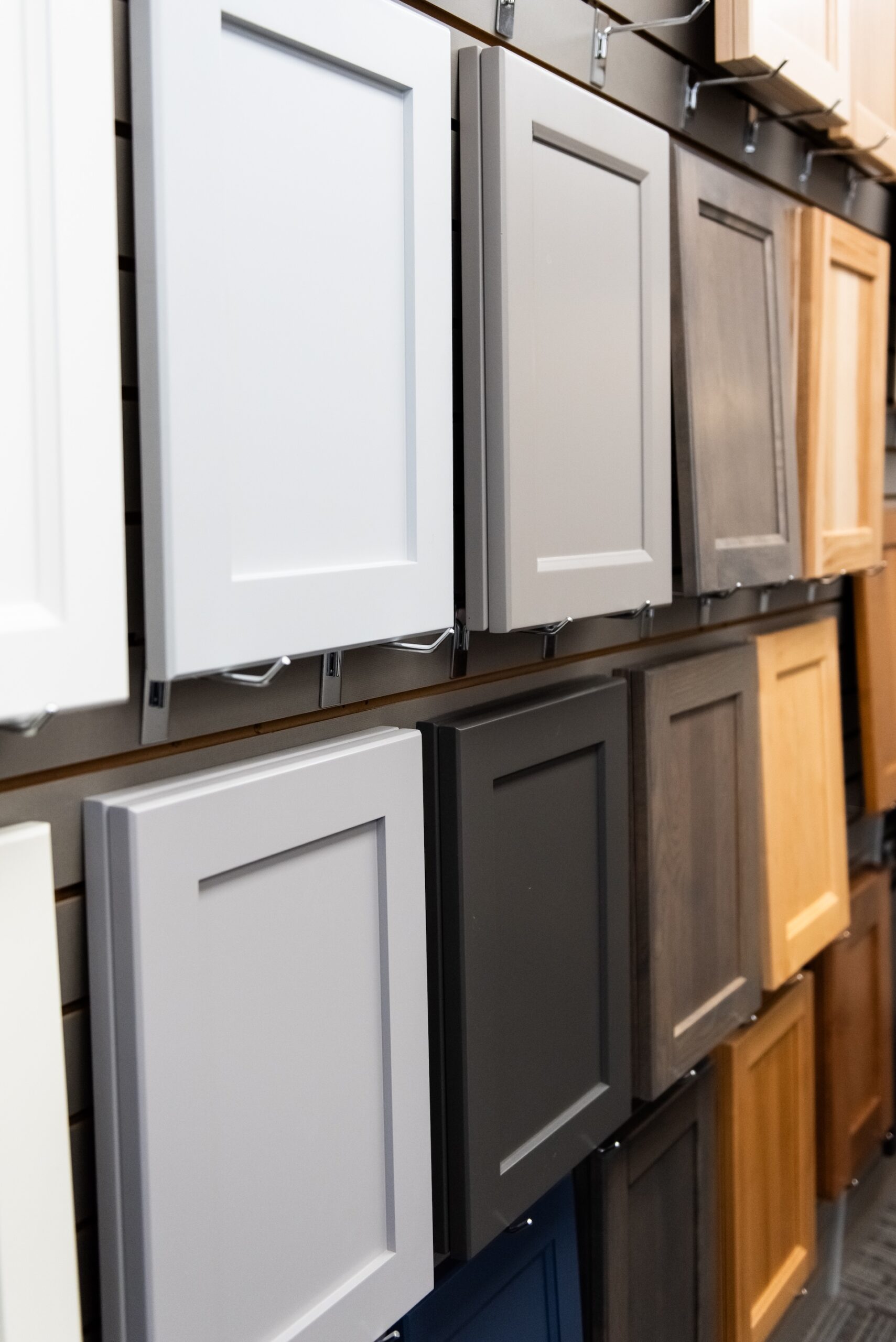
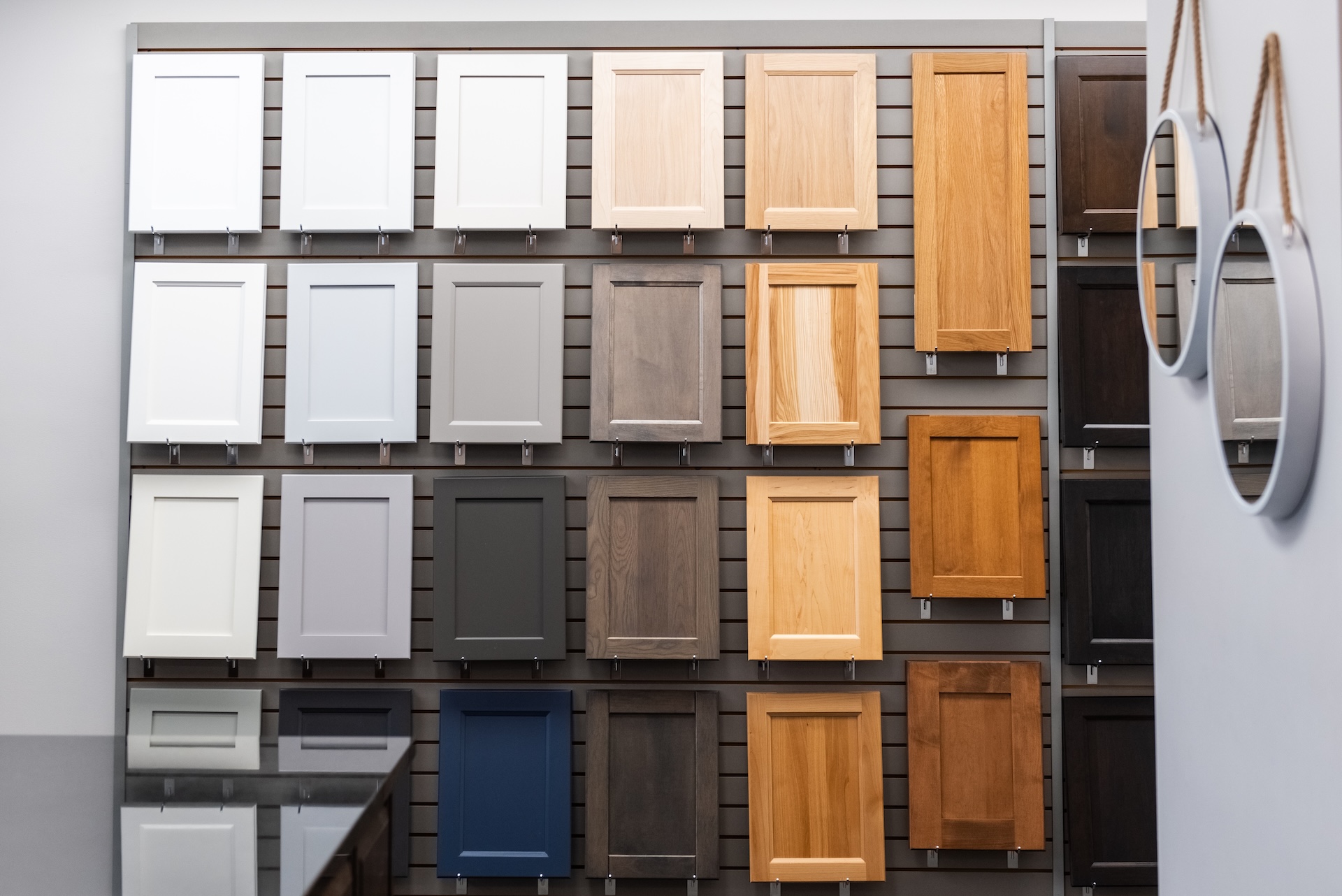
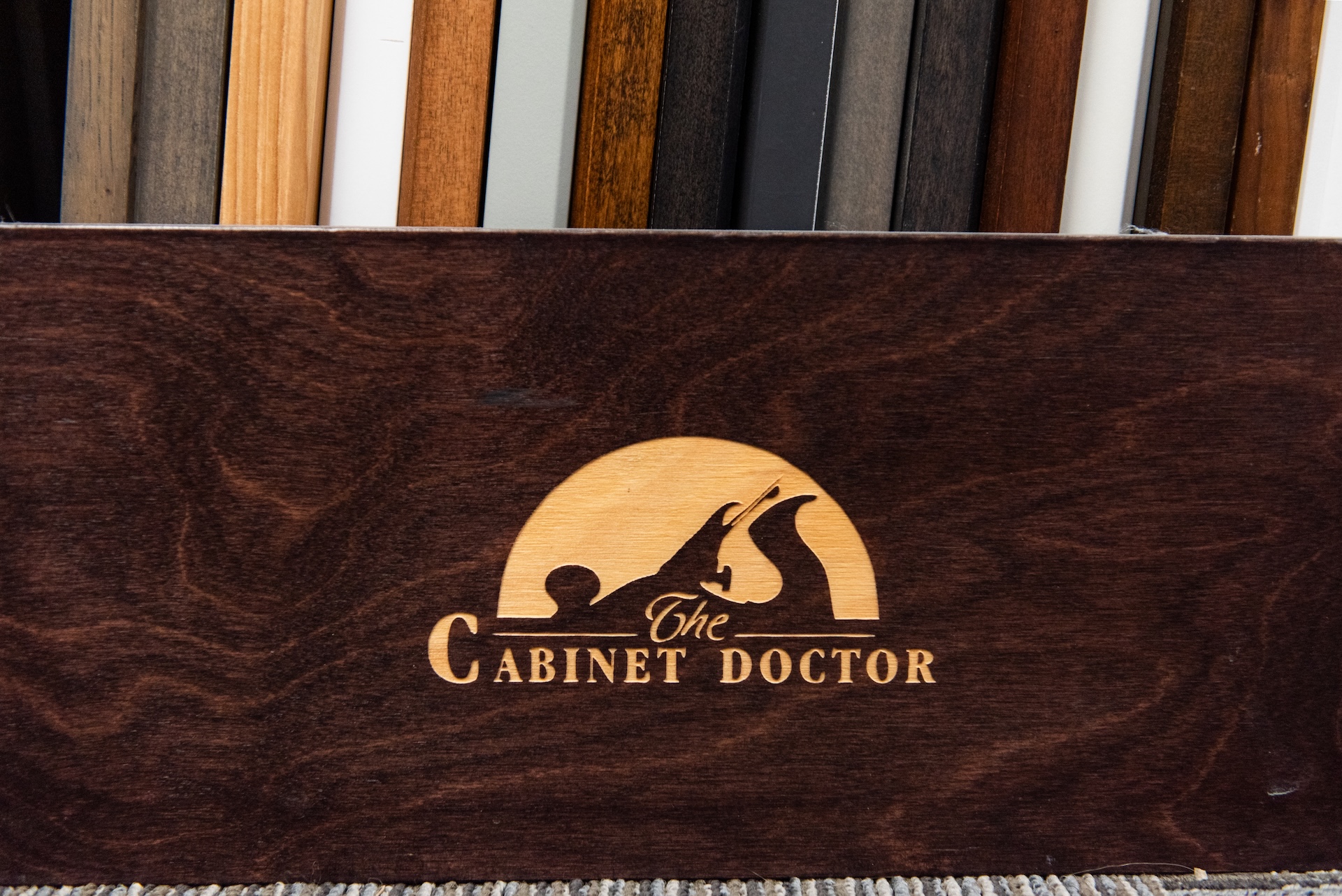
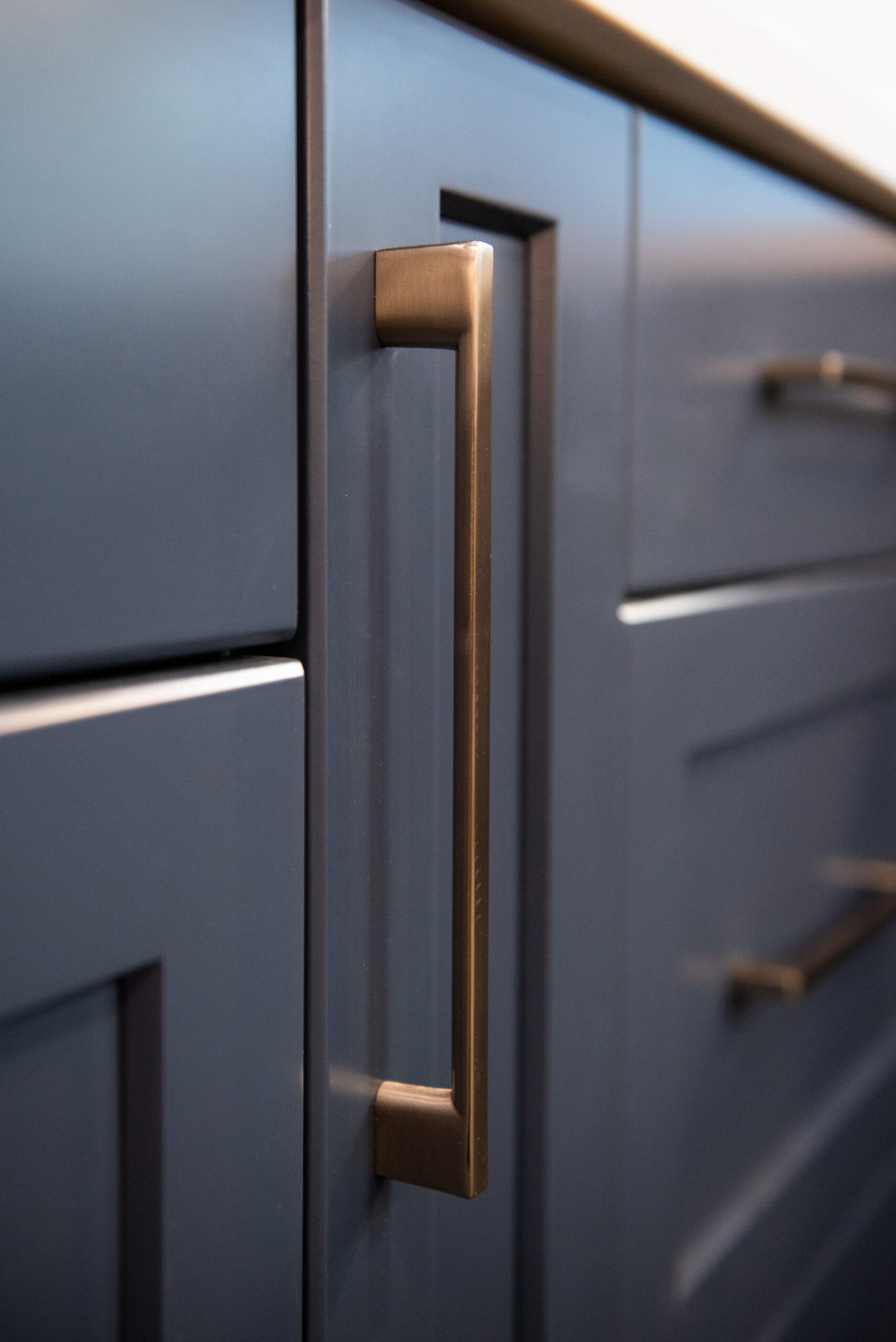
Quality Cabinetry
What are the qualities of a solid, well made cabinet?
- Lacquered 5/8” birch plywood cabinet box construction (No particleboard.)
- Wood drawers with a lacquer finish
- Quality soft-close hinges and drawer hardware
- Solid wood cornice, light valance, and other mouldings
- Superior cabinet door and drawer front construction and materials. Our hardwood doors are made with hand selected solid wood center panels and frame components. Both the frame and the center panel of our paint grade doors are made with a thicker than industry standard, higher grade engineered material.
- Most important if you choose stained wood: Our woodwork is hand stained so the color is (IN) the wood before the clear coats are sprayed. The finish is the life of your cabinet.
It’s simple really, and has worked well for us for over 45 years. Quality materials, people, and construction produce quality work and happy customers.
Cabinet Box and Drawer Materials
Melamine has been the industry standard for cabinet box construction for many years. It was chosen due to its consistent, wipeable finish and economical price point. The drawbacks of melamine cabinet boxes include a tendency to swell and misform when exposed to moisture, a risk of failure at hardware mounting points, and a lack of structural strength in narrow pieces such as cabinet box stretchers used on base cabinets. These drawbacks are why we have chosen lacquered hardwood plywood as our standard for cabinet boxes. Our standard drawer construction is dovetailed birch plywood with solid hardwood drawers available as an upgrade, all finished with a durable clear lacquer.
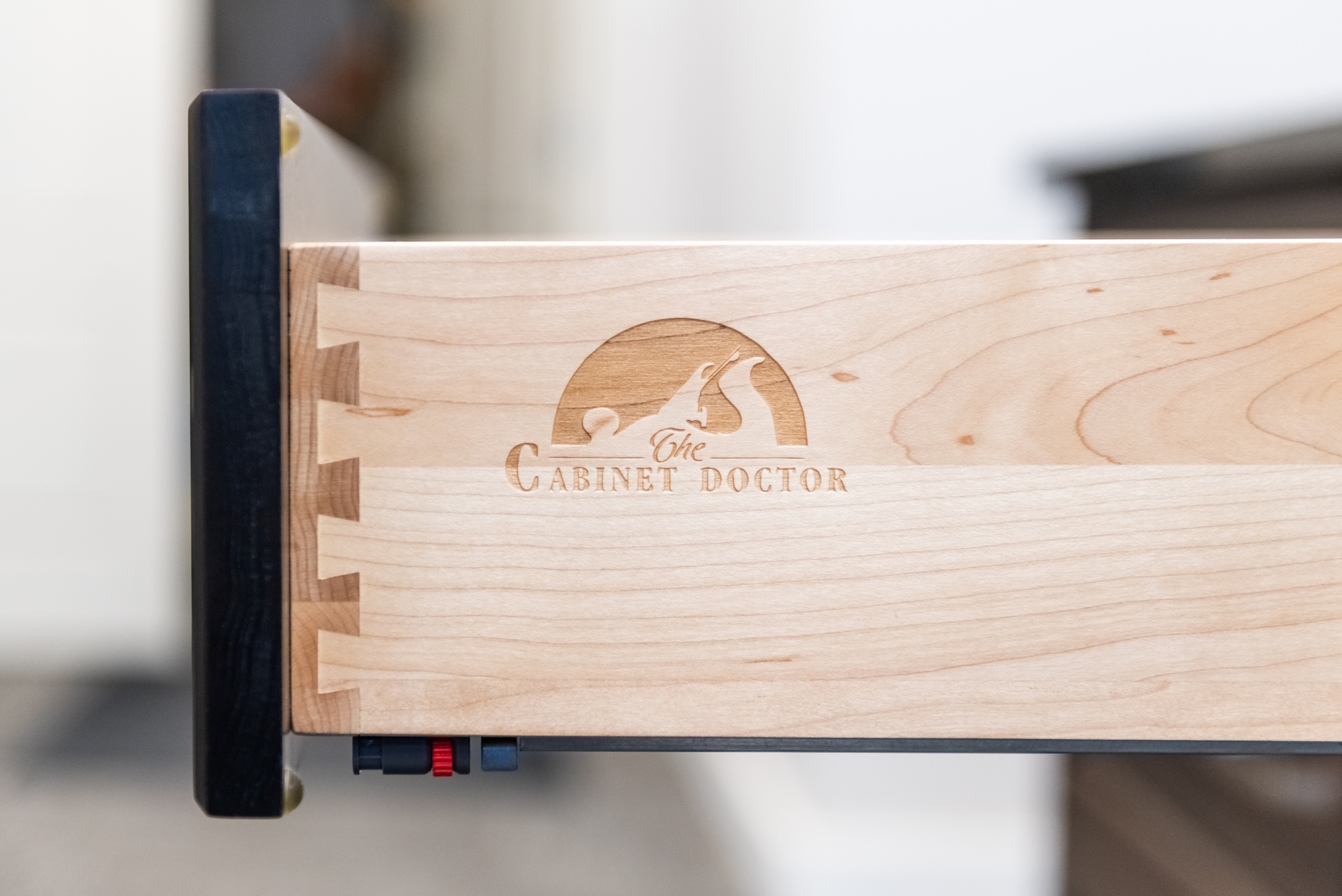
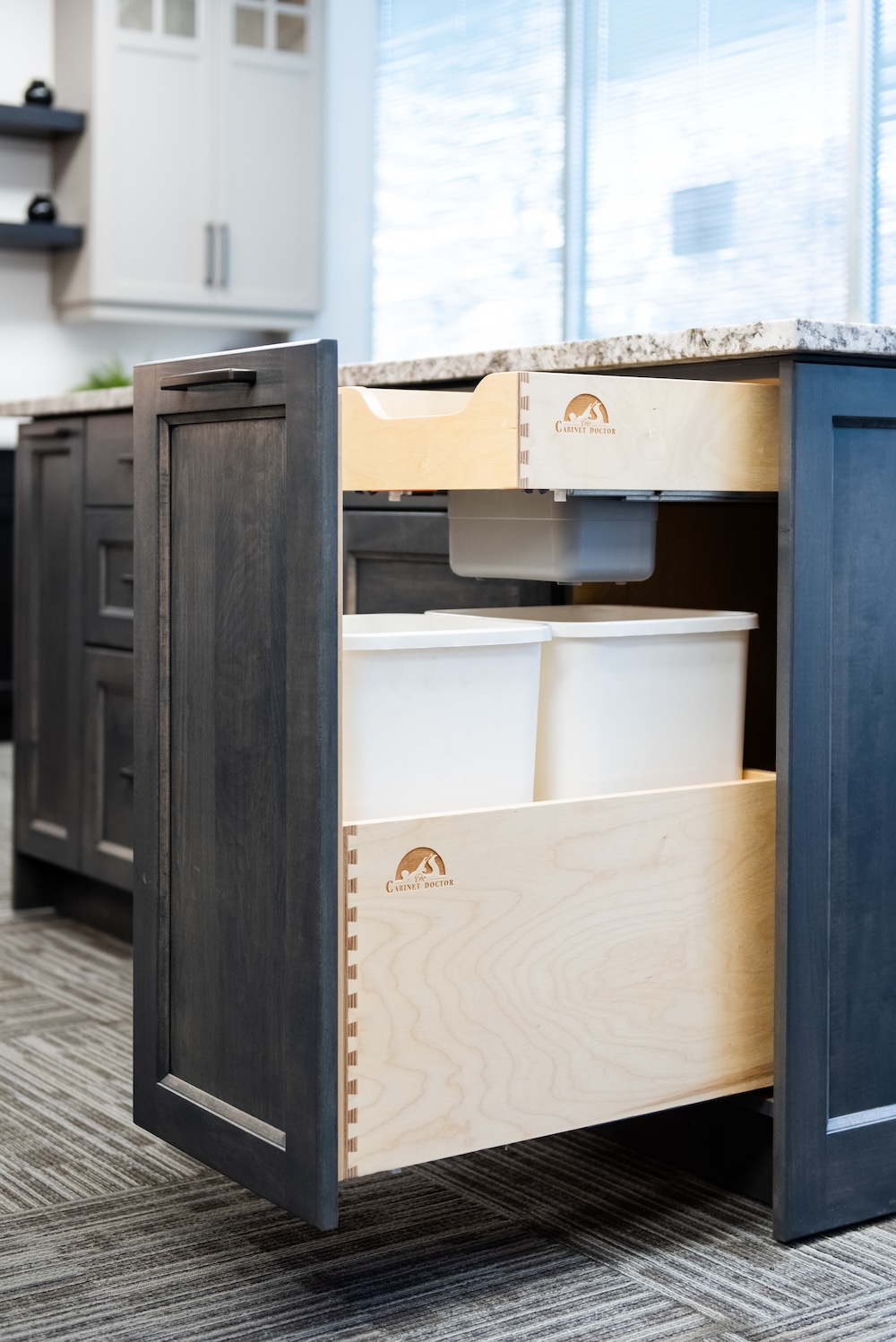
Quality Hardware
We often get calls from customers with broken drawer slides and hinges. This is typically hardware made offshore to imitate higher quality brands. This is why we insist on installing European made brands such as Blum and Salice. The lack of problems, service calls, hassle and disappointment on the superior product we install more than makes up for the few dollars difference in initial pricing. These brands are continuously improving on their designs and offering customers unique products to enhance the function of your kitchen.
